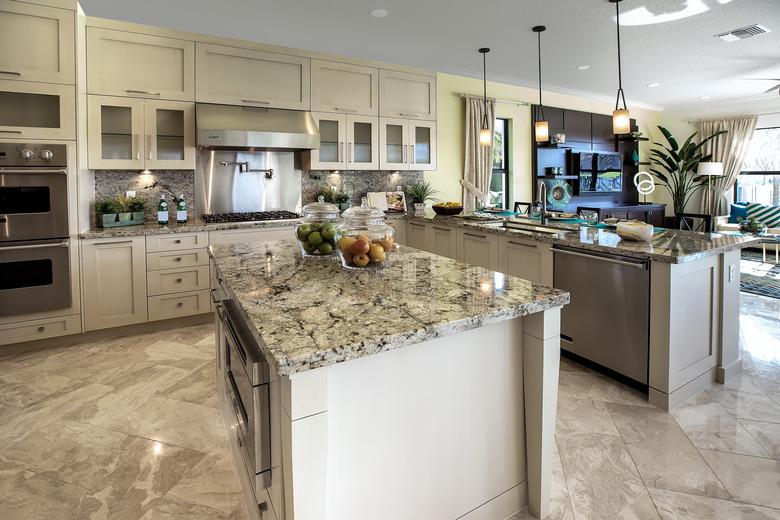How To Install Peel And Stick Vinyl Floor Squares
If you take a look at many homes across the country, you'll likely run into a lot of linoleum flooring in rooms like the kitchen, bathroom, laundry room or breezeway. Affordable to purchase, easy to install and generally simple to clean, vinyl flooring can be a great option for construction's sake, but it's often not much to look at from a design standpoint. Enter peel-and-stick on tiles. These self-adhesive squares can spruce up a room for little cost in a short amount of time, and are easy enough for anyone to tackle.
Types of Stick-on Tiles
If you're looking to cover your existing flooring with peel-and-stick floor vinyl tiles, you have several options available. Some of the most popular designs include prints that resemble marble, terra cotta clay, faux hardwood and mosaic tile. Faux stone vinyl flooring is another highly sought-after option for its ability to add style and dimension to flooring or backsplashes in kitchens and bathrooms without the texture that comes with traditional stone or ceramic flooring. Peel-and- stick tiles can be an affordable way to upgrade your rooms while still maintaining the relative ease of cleaning that comes with vinyl flooring.
Preparing Your Floor
Before you begin applying your peel-and-stick vinyl tiles to your existing flooring, you'll need to prepare the area. This will ensure that all of your tiles lie flat onto the surface, and will give your peel-and-stick tiles their best shot at adhering to the area properly and securely so that you can enjoy them for years to come.
Sweep away any dirt or debris from the floor, then clean it well with an abrasive cleaner that will remove any grease, grime or waxy residue that may have collected over time. If your flooring has cracks or tears, or isn't level, you can apply embossing leveler with a trowel to help smooth out the surface. Just make sure that the floor is completely dry before you begin applying your tiles.
Installing Your Tiles
Starting in the center of your room, lay your floor squares on the ground the way that you want them to rest. (Do not peel the backing off of the stickers at this time, this step is only to plan the placement of your tiles.) Work your way to the outer walls until the flooring in the room is covered. When you're ready to place your tiles, remove the paper backing from the bottom of a tile in the center of the room and place it onto the floor, pressing down firmly with both hands. Repeat this step with additional tiles, working in all directions until you reach the walls.
You will likely run into edges, corners or fixtures like a cabinet that will require a tile to be cut. This is easily done with a utility knife as peel and stick tiles are fairly thin. Use a tape measure to determine how much length to cut from your floor squares. Then, use a pencil or piece of chalk to mark the paper backing on the bottom of the tile before cutting your piece.
For cutting lines that aren't straight, like around the base of a toilet, you can use a profile gauge to measure your line. Alternatively, you can measure the line by resting a piece of paper around the fixture and outlining it with a pencil, then place the paper over your tile and cut around the line you have just drawn.
